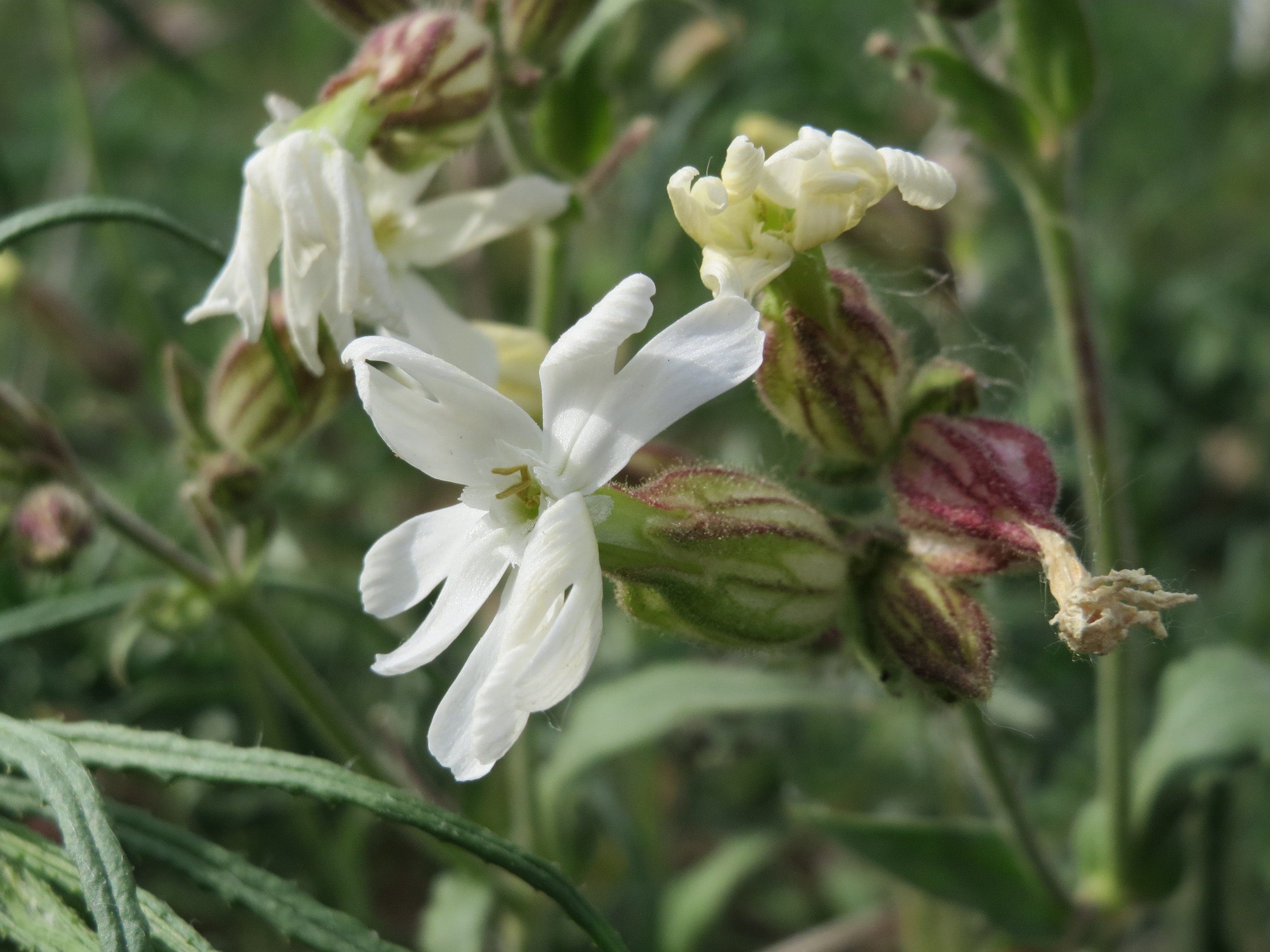|
White Campion
''Silene latifolia'' subsp. ''alba'' (formerly ''Melandrium album''), the white campion is a dioecious flowering plant in the family Caryophyllaceae, native to most of Europe, Western Asia and Northern Africa. It is a herbaceous annual, occasionally biennial or a short-lived perennial plant, growing to between 40–80 centimetres tall. It is also known in the US as bladder campion but should not be confused with ''Silene vulgaris'', which is more generally called bladder campion. The appearance depends on the age of the plant; when young they form a basal rosette of oval to lanceolate leaves 4–10 cm long, and when they get older, forked stems grow from these, with leaves in opposite pairs. The flowers grow in clusters at the tops of the stems, 2.5–3 cm diameter, with a distinctive inflated calyx and five white petals, each petal deeply notched; flowering lasts from late spring to early autumn. The entire plant is densely hairy. Occasional plants with pink flowers ar ... [...More Info...] [...Related Items...] OR: [Wikipedia] [Google] [Baidu] |
Jean Louis Marie Poiret
Jean Louis Marie Poiret (11 June 1755 in Saint-Quentin7 April 1834 in Paris) was a French clergyman, botanist, and explorer. From 1785 to 1786, he was sent by Louis XVI to Algeria to study the flora. After the French Revolution, he became a professor of natural history at the Écoles Centrale of Aisne. The genus '' Poiretia'' of the legume family Fabaceae was named after him in 1807 by Étienne Pierre Ventenat. Selected publications *Coquilles fluviatiles et terrestres observées dans le département de l'Aisne et aux environs de Paris. Prodrome. – pp. i–xi –11 1–119. Paris. (Barrois, Soissons); (1801). * ''Leçons de flore: Cours complet de botanique'' (1819–1820); (illus. by P. J. F. Turpin). * * * * * ''Voyage en Barbarie, …, pendant les années 1785 et 1786'' (1789). * ''Histoire philosophique, littéraire, économique des plantes d'Europe''; (1825–1829). * with Jean-Baptiste de Lamarck Jean-Baptiste Pierre Antoine de Monet, chevalier de La ... [...More Info...] [...Related Items...] OR: [Wikipedia] [Google] [Baidu] |
Silene
''Silene'' is a genus of flowering plants in the family Caryophyllaceae. Containing nearly 900 species, it is the largest genus in the family. Common names include campion and catchfly. Many ''Silene'' species are widely distributed, particularly in the northern hemisphere. Scientific history Members of this genus have been the subject of research by preeminent plant ecologists, evolutionary biologists, and geneticists, including Charles Darwin, Gregor Mendel, Carl Correns, Herbert G. Baker, and Janis Antonovics. Many ''Silene'' species continue to be widely used to study systems, particularly in the fields of ecology and evolutionary biology.Bernasconi et al. 2009. Silene as a model system in ecology and evolution. Heredity. 103:5-14. PMI19367316/ref> The genus has been used as a model for understanding the genetics of sex determination for over a century. ''Silene'' species commonly contain a mixture of hermaphroditic and female (or male-sterile) individuals (gynodioecy), and ... [...More Info...] [...Related Items...] OR: [Wikipedia] [Google] [Baidu] |
Sexually Transmitted Infection In Silene Latifolia
''Microbotryum violaceum'' is a host-specific anther smut (fungus) disease that infects ''Silene latifolia'' and sterilizes the host plant. When infected with this disease, the flowers generate pathogenic spores, which can then be transferred to other plants by pollinating insects. Therefore, this disease is sometimes classified as a sexually transmitted infection. Smuts They are fungal diseases that can infect different parts of the host plants (i.e. leaves, stems, flowers) and usually create black spores called teliospores in the infected area. Teliospores produce sporidia, white smut, and can survive under harsh environmental conditions. Therefore, the most effective way to prevent the spread of this fungal disease is to remove and destroy the infected area of the plant. Fungicides can be used to control the spread of smut; however, they must be applied before symptoms appear to be effective. Transmission In male ''S. latifolia'', ''M. violaceum'' eliminates pollen pro ... [...More Info...] [...Related Items...] OR: [Wikipedia] [Google] [Baidu] |
Medicinal Plant
Medicinal plants, also called medicinal herbs, have been discovered and used in traditional medicine practices since prehistoric times. Plants synthesize hundreds of chemical compounds for various functions, including Plant defense against herbivory, defense and protection against insects, fungi, Plant disease resistance, diseases, and herbivorous mammals. The earliest historical records of herbs are found from the Sumerian civilization, where hundreds of medicinal plants including opium are listed on clay tablets, c. 3000 BC. The Ebers Papyrus from ancient Egypt, c. 1550 BC, describes over 850 plant medicines. The Greek physician Pedanius Dioscorides, Dioscorides, who worked in the Roman army, documented over 1000 recipes for medicines using over 600 medicinal plants in ''De materia medica'', c. 60 AD; this formed the basis of pharmacopoeias for some 1500 years. Drug research sometimes makes use of ethnobotany to search for pharmacologically active substances, and this approac ... [...More Info...] [...Related Items...] OR: [Wikipedia] [Google] [Baidu] |
Infusion
Infusion is the process of extracting chemical compounds or flavors from plant material in a solvent such as water, oil or alcohol, by allowing the material to remain suspended in the solvent over time (a process often called steeping). An infusion is also the name for the resultant liquid. The process of infusion is distinct from both decoction—a method of extraction involving boiling the plant material—and percolation, in which water is passed through the material (as in a coffeemaker). History The first recorded use of essential oils was in the 10th or 11th century by the Persian polymath Avicenna, possibly in ''The Canon of Medicine''. Tea is far older than this, dating back to the 10th century BC as the earliest recorded reference. Preparation techniques Infusion is a chemical process that uses botanicals (typically dried herbs, flowers or berries) that are volatile and release their active ingredients readily in water, oil, or alcohol. In this process, a liquid i ... [...More Info...] [...Related Items...] OR: [Wikipedia] [Google] [Baidu] |



